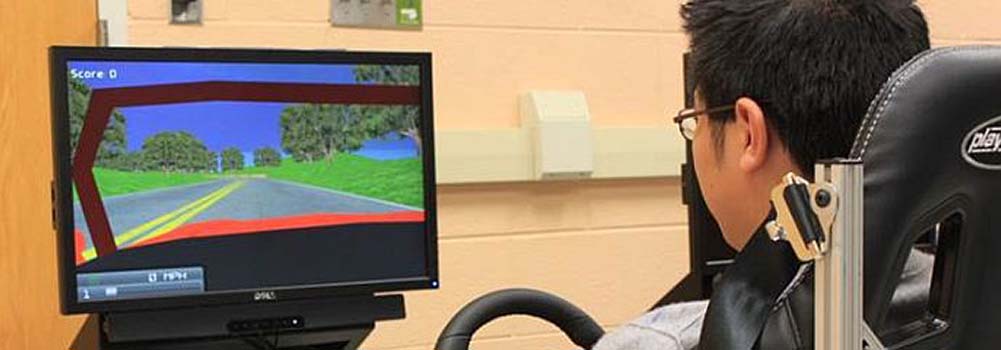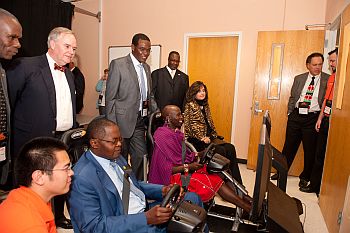Clemson Automotive Training System (CATS)

Program Description
Novice drivers are often ill-equipped to safely operate a motor vehicle due to their limited repertoire of skills and experiences. The Clemson Automotive Training System (CATS) has been developed to educate and train novice drivers to drive safely on urban and rural roads (2013 SAE paper). The road designs are fully customized and can be adjusted to meet the stated situational requirements. The system can be programmed to simulate a variety of high-risk driving scenarios. Extensive driver and vehicle data can be collected and analyzed within the virtual driving simulator. A user-friendly, interactive driving interface displays messages and images on the computer screen to enhance the learning environment. This approach allows drivers to instantly view their driving performances and understand opportunities to improve their driving. CATS is also a portable automotive simulator, which individuals can download and use at home instead of going to a remote location if the required interface hardware exists.
Learning Modules
Four modules have been designed and implemented into the simulator to evaluate the driver’s performance in the given scenario. Each module has its own special purpose. The first module is an intersection with a stop sign that detects the drivers’ behavior when advancing through traffic signs on the road. The second module, where one lane is closed, tests the driver’s ability to change lanes safely. The third module offers drivers an overview on the vehicle’s longitudinal dynamics when making an emergency stop from at high speeds. Finally, the last module examines the driver’s ability to avoid an unexpected obstacle on the road.
Benefits
A user-friendly interface offers students plenty of useful information. A real-time data recording and detailed driving score system ensures that the students are immediately aware of their driving abilities. After finishing the four modules, the CATS system provides detailed information regarding assessment. Thus, students become more familiar with the rules of the road, gain an increased understanding about the vehicle dynamics involved in stopping the car within certain distances, and have an enhanced ability to predict potential road hazards.
![]()



